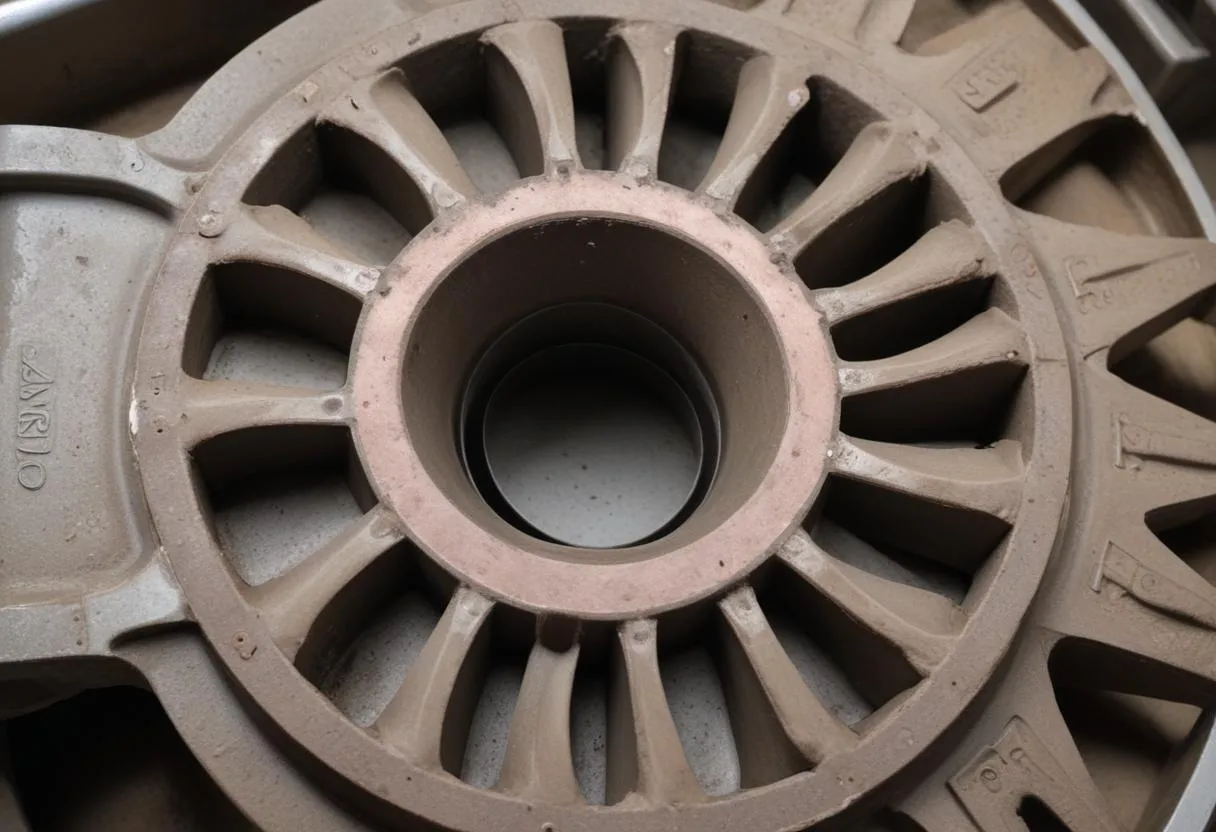 Pumps are crucial components in various industrial, residential, and commercial systems, helping to move liquids from one point to another. Understanding the different types of pumps and their specific applications is essential for ensuring efficient and effective operations. Here’s a detailed look at some of the common types of pumps and how they are typically used:
Pumps are crucial components in various industrial, residential, and commercial systems, helping to move liquids from one point to another. Understanding the different types of pumps and their specific applications is essential for ensuring efficient and effective operations. Here’s a detailed look at some of the common types of pumps and how they are typically used:
Centrifugal Pumps: These are the most commonly used type of pump, favored for their simple design and efficiency in transferring liquids at high flow rates. They work using a rotating impeller to create centrifugal force, which pushes the liquid outward from the pump and increases the fluid’s pressure. Some common applications include:
- Water supply systems
- Building services
- Fire protection systems
- Air conditioning and heating systems
Positive Displacement Pumps: These pumps move a fixed amount of fluid through the expansion and contraction of a flexible diaphragm. Positive displacement pumps are ideal where a consistent flow rate is necessary regardless of the pressure, making them suitable for applications such as:
- Dosing and metering
- Handling high-viscosity fluids
- Oil and fuel transfer
- Food and beverage production
Diaphragm Pumps: A type of positive displacement pump, diaphragm pumps use a diaphragm that moves back and forth to create a temporary chamber, which draws in and expels fluid. They are particularly used for hazardous or toxic fluids because they provide a seal between the fluid and the pump motor. Typical uses include:
- Chemical manufacturing and transfer
- Waste water treatment
- Mining operations
- Pharmaceutical manufacturing
Submersible Pumps: Designed to operate while submerged in the fluid they are pumping, submersible pumps are sealed to prevent fluid from entering the motor. These pumps are extensively used in:
- Drainage and sewage pumping
- Deep well drilling
- Irrigation systems
Gear Pumps: Another variety of positive displacement pumps, gear pumps use gears to pump fluid by displacement. They are well-suited for pumping oils and other chemical substances and are commonly utilized in sectors like:
- Petroleum industry
- Chemical processing
- Hydraulic systems
Peristaltic Pumps: These pumps work by alternately compressing and relaxing a hose or tube, drawing contents into the tube and moving them forward. This “peristaltic” action is gentle and can handle sensitive materials, making these pumps ideal for:
- Medical and lab applications
- Food and beverage processing
- Handling aggressive or corrosive fluids
This comprehensive review of pump types shows that choosing the right pump depends heavily on the application’s specific requirements, including the nature of the fluid, desired flow rate, and environmental considerations. Selecting an appropriate pump type can lead to better efficiency and longer service life of the system.
Factors to consider when selecting a pump
When selecting the right pump for a specific application, several crucial factors need to be evaluated to ensure optimal performance and reliability. These factors can significantly affect the efficiency, operational cost, and lifespan of the pump. Here is a systematic breakdown of these important considerations:
Flow Rate and Capacity: One of the primary considerations is the required flow rate, measured in gallons per minute (GPM) or cubic meters per hour (m³/h). This refers to the volume of liquid the pump needs to move within a given time frame. Determining accurate flow requirements is essential to prevent issues such as pump cavitation and excessive wear.
Head and Pressure Requirements: The pump must also be capable of overcoming the system head, which is the total resistance encountered by the fluid as it moves through the pump system. This includes static head, which is the difference in height the liquid needs to travel, and friction head, which depends on the size and length of piping, and the type of fluid being pumped. Understanding these pressures is crucial for selecting a pump that operates effectively under the system’s conditions.
Liquid Properties: The characteristics of the liquid, such as viscosity, temperature, and chemical composition, play a significant role in pump selection. High-viscosity fluids require different pump designs, such as gear or peristaltic pumps, compared to low-viscosity fluids. Additionally, if the fluid is corrosive or contains abrasive particles, the pump materials must be compatible to avoid deterioration and ensure long-term functionality.
Material Compatibility: The construction materials of the pump should be selected based on the fluid’s properties to withstand corrosion, abrasion, and any other reactive processes. Common materials include stainless steel, cast iron, and various plastics and composites, each offering different resistance levels against various chemicals and temperatures.
Energy Efficiency: Pump efficiency is a critical aspect, especially in systems that operate continuously. An energy-efficient pump can significantly reduce electricity costs and environmental impact. Innovative technologies like variable frequency drives (VFR) can be employed to optimize power consumption and control flow rates effectively.
Installation and Operational Conditions: Environmental factors such as ambient temperature, altitude, and humidity can impact pump performance. The physical installation space and accessibility for maintenance are also important considerations that can affect the choice of pump type and size.
Cost of Ownership: Beyond the initial purchase price, the total cost of ownership includes maintenance, energy use, and potential downtime costs. A higher initial investment in a more suitable and efficient pump can lead to significant savings in total cost of ownership over time.
Maintenance Requirements: Some pumps may require more frequent maintenance due to their design and operational demands. The ease of maintenance and availability of spare parts should be considered to minimize downtime and ensure reliable operation.
To organize these selection criteria effectively, consider the following table that sums up the key points:
| Criterion | Description | Impact |
|---|---|---|
| Flow Rate and Capacity | Volume of liquid to be moved per unit of time | Critical for selecting right pump size and type |
| Head and Pressure | Total resistance fluid experiences | Essential for ensuring effective fluid movement |
| Liquid Properties | Chemical composition, temperature, and viscosity | Determines material selection and pump type |
| Material Compatibility | Suitability of pump materials against fluid properties | Important for longevity and reliability |
| Energy Efficiency | Optimization of power use | Reduces operational costs and eco-impact |
| Installation and Operation Conditions | Environmental factors and space requirements | Influences performance and selection of pump type |
| Cost of Ownership | Long-term operational and maintenance costs | Affects economic viability |
| Maintenance Needs | Frequency and ease of maintaining the pump | Impacts uptime and long-term functionality |
These criteria provide a solid framework for choosing the most suitable pump for different applications, balancing operational needs, and economic factors to achieve efficiency and reliability in fluid movement tasks.
Maintenance and troubleshooting tips for pumps
 Regular maintenance and efficient troubleshooting are two pivotal actions that can maximize the longevity and effectiveness of pump systems. Without adequate attention to these areas, even the most robust pumps can succumb to failures, leading to downtimes and costly repairs. Here, we offer practical insights into maintaining different types of pumps and provide troubleshooting tips for common pump issues.
Regular maintenance and efficient troubleshooting are two pivotal actions that can maximize the longevity and effectiveness of pump systems. Without adequate attention to these areas, even the most robust pumps can succumb to failures, leading to downtimes and costly repairs. Here, we offer practical insights into maintaining different types of pumps and provide troubleshooting tips for common pump issues.
Maintenance Tips
Proper maintenance routines vary depending on the type of pump in use, yet some general practices apply universally:
1. Regular Inspection: Conducting routine inspections can help detect early signs of wear or damage. Check components such as the seals, bearings, and impeller for signs of deterioration.
2. Lubrication: Bearings and other moving parts should be regularly lubricated to minimize friction and wear. Use the lubricant recommended by the pump manufacturer to ensure compatibility.
3. Seal Replacement: Seals prevent liquid from leaking and protect the internal components of the pump. Periodically check and replace worn seals to maintain pump efficiency and prevent fluid contamination.
4. Cleaning: Keep the pump and its components clean from debris and deposits, which can impair the pump’s operation. This is particularly important for pumps handling solid-laden or viscous fluids.
5. Monitoring System Performance: Utilize gauges and sensors to continuously monitor pump performance. Parameters like pressure, temperature, and flow rate can provide critical information about the pump’s health.
6. Vibration Analysis: Excessive vibration can indicate misalignment, imbalance, or bearing failures. Regular vibration analysis can help in diagnosing such issues early.
These generic guidelines provide a foundation, but specific maintenance schedules should adhere to the instructions provided by the pump manufacturer.
Troubleshooting Tips
When pumps malfunction, quick and correct identification of the issue is crucial to mitigate impacts on operations. Here are some common pump problems and troubleshooting strategies:
- Low Flow or Pressure: Check for clogged filters or suction lines, closed or partially closed valves, air leaks in the suction line, or a worn impeller. Rectify any obstructions or replace damaged parts as needed.
- High Power Consumption: This could be due to running the pump too far from its designed operating point. Reevaluate the system setup or consider using a variable frequency drive to adjust the pump’s speed.
- Noisy Operation: Unusual noises often stem from cavitation, bearing failures, or pump vibration due to misalignment. Inspect these elements and make necessary corrections or replacements.
- Overheating: Overheating can occur from excessive use, inadequate flow, or environmental conditions. Ensure adequate liquid flow to cool the pump, and check environmental factors that may be influencing the temperature.
- Leakages: Seal leaks or body cracks can be evidenced by visible leakage around the pump. Depending on the location and cause of the leak, replace the seals or repair any cracks in the pump body.
Table of Common Issues and Fixes
| Problem | Possible Cause | Remedy |
|---|---|---|
| Low Flow/Pressure | Clogged filter/line, air leaks, worn impeller | Clean/replace parts, seal leaks |
| High Power Consumption | Incorrect operation point | Adjust operation parameters or setup |
| Noisy Operation | Cavitation, bearing failure, misalignment | Inspect and replace bearings, realign pump |
| Overheating | Poor cooling, environmental factors | Ensure adequate flow, modify environmental setup |
| Leakages | Seal failure, body cracks | Replace seals, repair pump body |
Adopting a proactive approach to maintenance and being equipped to troubleshoot effectively can drastically reduce downtime and enhance the operational efficiency of pumps.